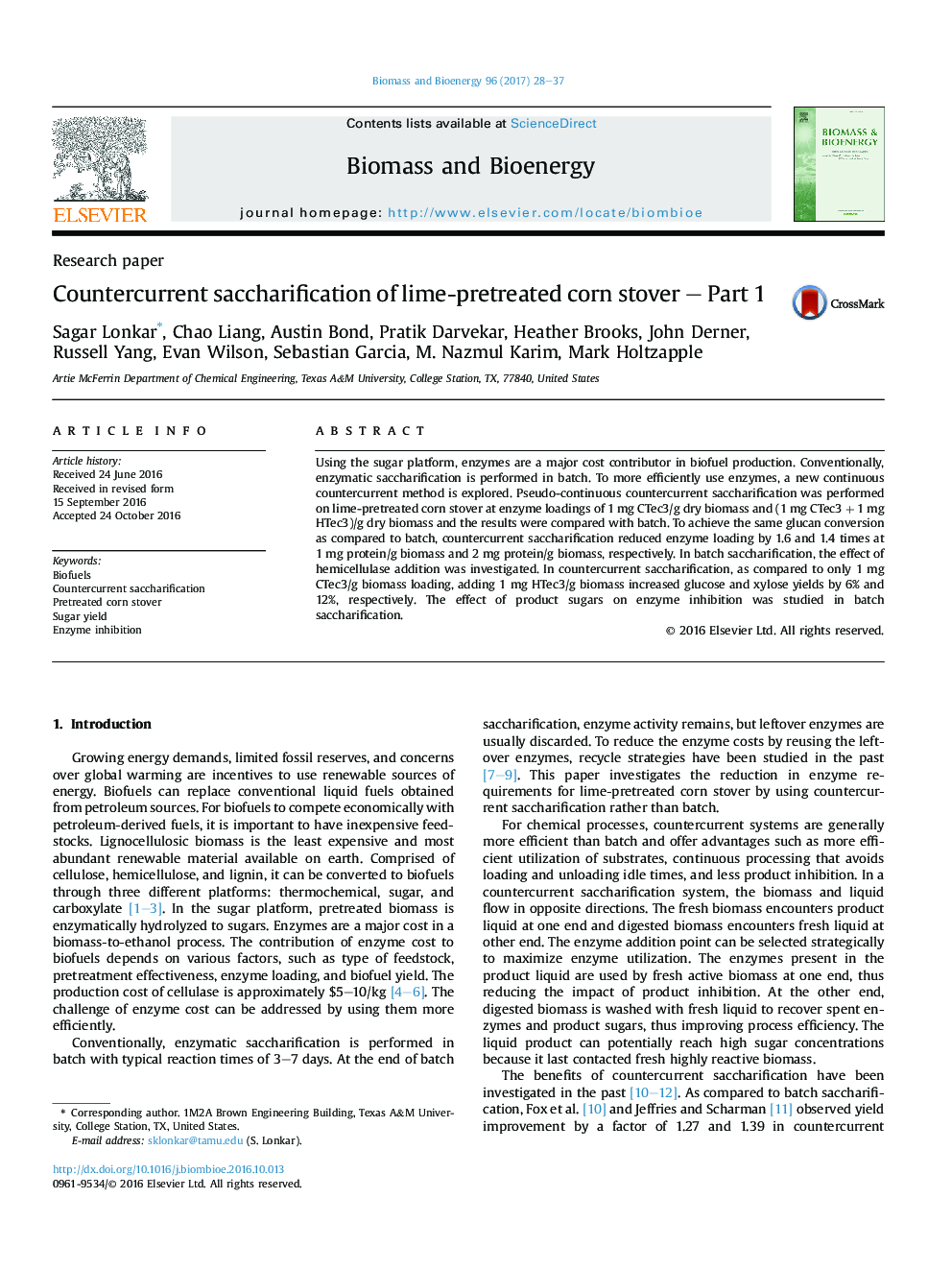| Article ID | Journal | Published Year | Pages | File Type |
|---|---|---|---|---|
| 4996400 | Biomass and Bioenergy | 2017 | 10 Pages |
Abstract
Using the sugar platform, enzymes are a major cost contributor in biofuel production. Conventionally, enzymatic saccharification is performed in batch. To more efficiently use enzymes, a new continuous countercurrent method is explored. Pseudo-continuous countercurrent saccharification was performed on lime-pretreated corn stover at enzyme loadings of 1Â mg CTec3/g dry biomass and (1Â mg CTec3Â +Â 1Â mg HTec3)/g dry biomass and the results were compared with batch. To achieve the same glucan conversion as compared to batch, countercurrent saccharification reduced enzyme loading by 1.6 and 1.4 times at 1Â mg protein/g biomass and 2Â mg protein/g biomass, respectively. In batch saccharification, the effect of hemicellulase addition was investigated. In countercurrent saccharification, as compared to only 1Â mg CTec3/g biomass loading, adding 1Â mg HTec3/g biomass increased glucose and xylose yields by 6% and 12%, respectively. The effect of product sugars on enzyme inhibition was studied in batch saccharification.
Related Topics
Physical Sciences and Engineering
Chemical Engineering
Process Chemistry and Technology
Authors
Sagar Lonkar, Chao Liang, Austin Bond, Pratik Darvekar, Heather Brooks, John Derner, Russell Yang, Evan Wilson, Sebastian Garcia, M. Nazmul Karim, Mark Holtzapple,
